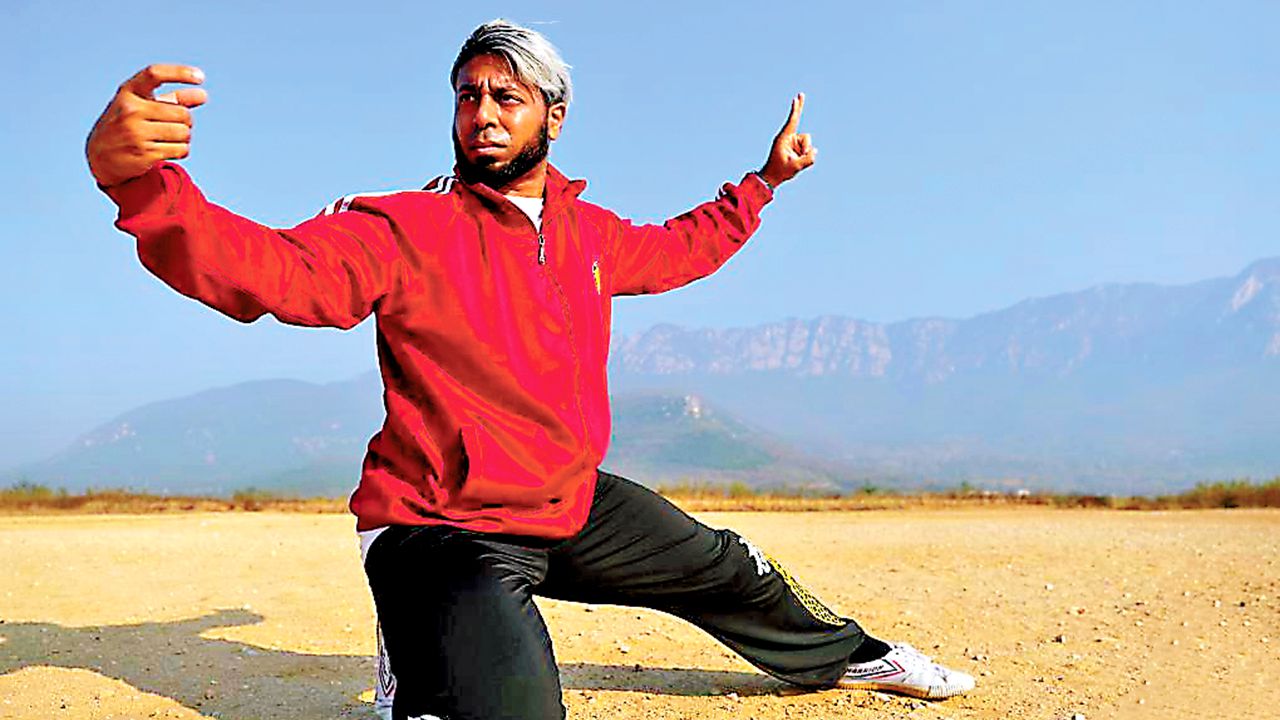US lawyer chasing his dream of becoming a kung fu master
Writer: | Editor: Zhang Zhiqing | From: | Updated: 2025-02-11
If you think learning kung fu is difficult, meet Mohammad Ullah, an American lawyer who can switch between at least seven forms of Chinese martial arts.
At 30, Ullah is a versatile practitioner of Chinese kung fu, having spent a decade learning various forms of boxing, swordsmanship, and staff play.

Mohammad Ullah practices drunken fist at Shaolin Epo Martial Arts School in Dengfeng, Henan Province, on Oct. 29, 2024. File photo
Last year, he took part in the Zhengzhou International Shaolin Wushu (martial arts) Festival held in Central China’s Dengfeng and won two medals — a silver medal for guandao swordsmanship and a bronze medal for eight extremes fist. The festival saw the attendance of 2,560 athletes from 56 countries and regions.
Dengfeng, Henan Province, is renowned for being home to the Shaolin Temple, the birthplace of kung fu. There, Ullah came to grips with two new forms of martial arts — xiaohongquan boxing and drunken fist.
Drunken fist was depicted in Jackie Chan’s kung fu movie “Drunken Master,” but even in China, the boxing form has few practitioners as its unpredictable movements and surprise strikes are difficult to learn.
“Probably the first time I saw the drunken fist was in Jackie Chan’s movie. It’s hard and probably not the best form to do for competition, but it’s very entertaining,” said Ullah.
Growing up in Houston, Texas, a city with many Chinese and Vietnamese immigrants, Ullah became acquainted with Chinese martial arts through kung fu movies. His training started in his college years when he joined a kung fu club. After learning southern-style boxing, his interest in kung fu culture drove him to southern-style sword and staff, as well as guandao sword and eight extremes fist.
He visited China for the first time in 2023 to take part in a global Wushu championship at Mount Emei. There he was amazed by the diversity of kung fu genres and decided to further expand his kung fu repertoire.
“I train in such a way [learning more than one style] because it helps me appreciate the vast diversity of Chinese martial arts,” Ullah said. “Also, as an athlete, it is important to be well-rounded.”
The benefits are not limited to physical health, as Ullah believes the discipline required to improve kung fu forces one’s mind to “undergo a process of filtering out what is unnecessary,” which “trains the mind.”
His latest trip to China also brought him to the Shaolin Epo Martial Arts School. There, he had the unique opportunity to train in the art of drunken fist and deepen his understanding of kung fu’s special place in Chinese culture.
“It seems to me that martial arts are not just a hobby or a class for children, but part of their daily lives. Everyone in China has respect for martial arts, and it is as important to them as their food, language, and history,” Ullah said.
Ullah believes the sport has built a bridge for cultural exchange, as the birthplace of kung fu welcomes more American and other international practitioners.
“Through interactions with people from different backgrounds, we can promote kung fu and foster understanding between nations,” he said. (Xinhua)